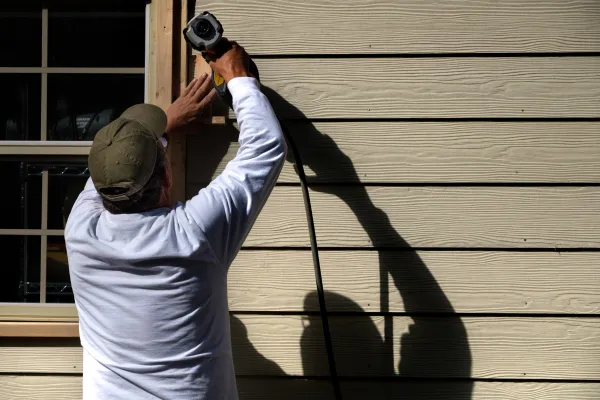
Siding
The Ultimate Guide to Choosing the Right Siding for Your Home
When it comes to protecting and beautifying your home, siding is one of the best investments you can make. Not only does siding shield your house from the elements, but it also enhances curb appeal, improves energy efficiency, and adds value. With so many options available today, finding the best siding material for your needs can feel overwhelming. This guide will break down the different types of siding, their benefits, and key considerations to help you make an informed decision.

Why Siding Matters
Siding plays a crucial role in protecting your home from moisture, extreme temperatures, and other environmental factors. When installed correctly, siding forms a barrier that prevents water from infiltrating the walls, which can lead to rot, mold, and structural issues. High-quality siding can also help insulate your home, reducing heating and cooling costs. And let’s not forget the aesthetic aspect—choosing the right siding can give your home a fresh, modern look or help maintain its classic appeal.
Common Types of Siding
Each siding material has its pros and cons, and understanding these can help you decide what’s best for your home’s style, climate, and budget.
1. Vinyl Siding
Vinyl siding is one of the most popular choices for homeowners because it’s affordable, low maintenance, and available in various colors and styles. It’s also resistant to fading, peeling, and insects, making it an excellent choice for durability. However, vinyl may not be as sturdy in areas with extreme temperatures, as it can crack or warp under intense heat or cold.
Pros: Affordable, low maintenance, many color options
Cons: Susceptible to extreme temperatures, limited insulation properties
2. Fiber Cement Siding
Fiber cement siding is made from a mixture of cement, sand, and cellulose fibers. It’s a durable and eco-friendly option that mimics the appearance of wood, stone, or brick. Fiber cement is resistant to fire, insects, and rot, making it ideal for areas with harsh weather. Although it requires more maintenance than vinyl, it’s a worthwhile investment for its longevity and curb appeal.
Pros: Durable, fire-resistant, resembles natural materials
Cons: Heavier and more challenging to install, requires occasional painting
3. Wood Siding
For those seeking a natural, timeless look, wood siding remains a popular option. It offers a warm, rustic appearance that’s hard to replicate. However, wood siding requires regular maintenance to protect it from moisture, insects, and fire. While wood is environmentally friendly, it can be costly, especially when treated for durability.
Pros: Natural appearance, environmentally friendly
Cons: High maintenance, can be expensive
4. Metal Siding
Metal siding, typically made from aluminum or steel, is known for its durability and low maintenance requirements. It’s ideal for areas with high humidity as it’s resistant to rot, pests, and fire. Metal siding is also recyclable, making it a sustainable option. However, it may dent or scratch easily, so it’s essential to weigh the pros and cons before choosing this option.
Pros: Durable, low maintenance, recyclable
Cons: Prone to dents, may rust over time without proper maintenance
5. Stone Veneer Siding
Stone veneer is a lighter, more affordable alternative to full stone siding. It’s available in a variety of textures and colors, offering a luxurious, high-end look. While it can be more costly than other materials, it provides excellent insulation and durability. Stone veneer works well in traditional and rustic home styles, adding a touch of sophistication and increased property value.
Pros: High-end appearance, excellent durability
Cons: Expensive, challenging to install
Factors to Consider When Choosing Siding
Climate
The climate you live in should be a top consideration. For instance, fiber cement and metal are ideal for areas prone to extreme weather, while vinyl and wood may not withstand severe conditions as well. Humidity, temperature fluctuations, and sun exposure all impact siding performance over time.
Cost
Your budget will play a big role in your choice of siding. Vinyl is often the most affordable, while materials like stone veneer and wood can be pricier. Remember to factor in not only the cost of the material but also the installation and maintenance expenses.
Aesthetic Appeal
Your home’s style can help determine which siding material will look best. For example, wood siding suits traditional homes, while metal siding is often seen on modern properties. Many materials offer different colors and finishes, so take time to find the right look for your home.
Maintenance
Consider the time and money you’re willing to spend on maintenance. Some siding options, like vinyl and metal, require minimal upkeep, while others, like wood, need regular sealing, painting, or staining to stay in top condition.
Siding Installation: DIY or Professional?
While some homeowners choose to tackle siding installation themselves, it’s usually best left to professionals. Improper installation can lead to costly repairs, moisture infiltration, and reduced energy efficiency. Professional installation ensures that your siding is properly sealed and aligned, maximizing its lifespan and protective qualities.
Why SG Plus Is Your Best Choice for Siding Installation
At SG Plus, we specialize in siding solutions tailored to meet your home’s specific needs. From helping you choose the right material to ensuring seamless installation, we’re committed to providing top-quality service. Our team brings years of experience and expertise, guaranteeing that your home is in good hands. Plus, we understand the importance of working within your budget and strive to offer competitive pricing.
Final Thoughts
Choosing the right siding for your home is a big decision, and the variety of options available can feel daunting. By considering factors like climate, budget, and maintenance needs, you can find the ideal siding material to protect and enhance your home for years to come. Contact SG Plus today to learn more about our siding options and schedule a consultation.
